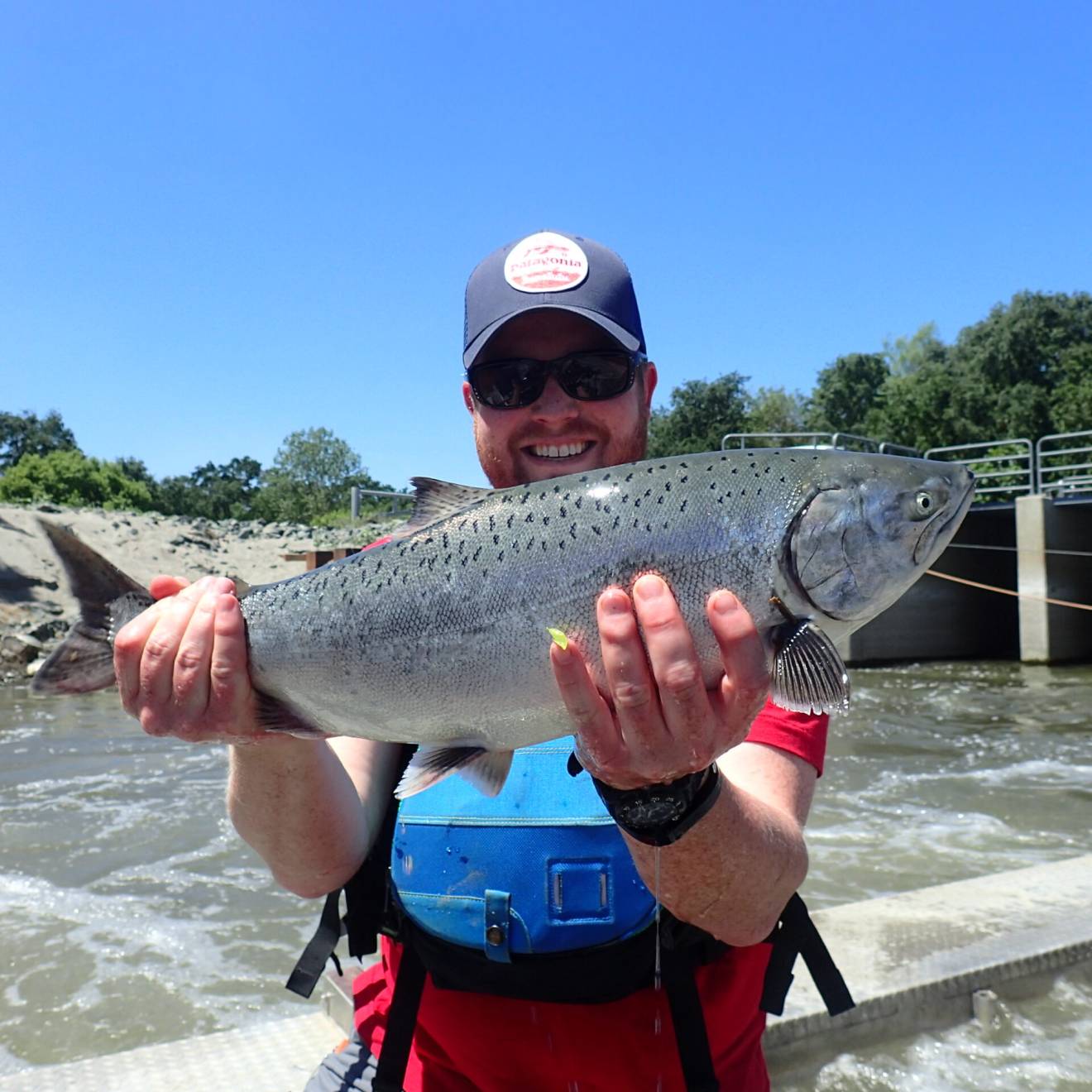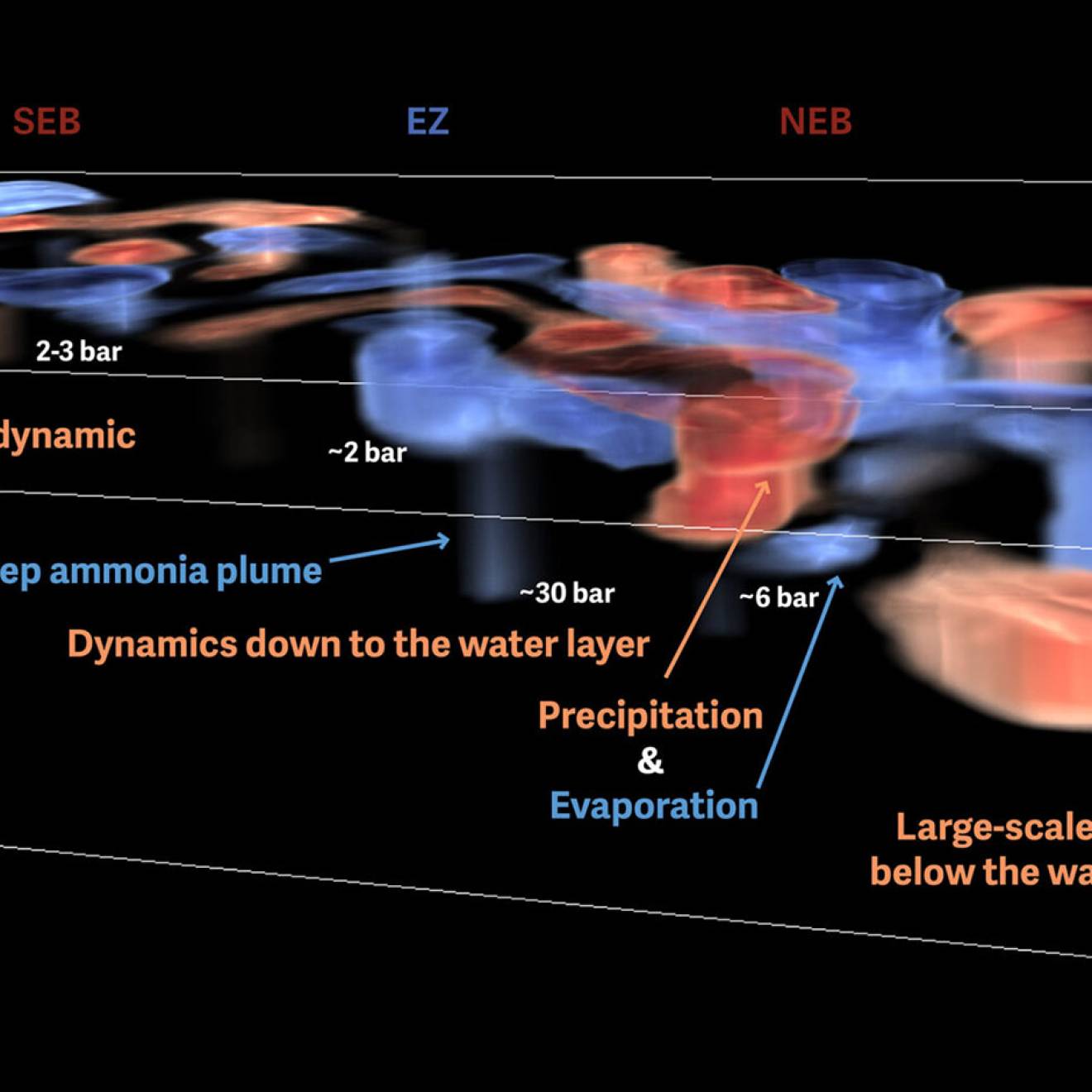In the past year, UC researchers have boldly gone where most of us would never go, not even if you paid us.
They peered into the depths of the universe and plumbed the mysteries of the human body, from cortex to colon. They tried to avoid insulting a sensitive, 60,000-pound creature swimming in tight circles around their boat. They even waded into fights between friends. Thankfully, they’ve all come back in one piece, and they’ve brought new ways of understanding ourselves, our planet and our place in the universe.
Join us in looking back on some of 2024’s most memorable discoveries from UC research.
UC Berkeley chemists vaporized plastic trash into a valuable commodity
Most plastic is recyclable — so why doesn’t it actually get recycled? The products of recycling polyolefins, a category that makes up about two-thirds of plastic waste, just aren’t that valuable: because the chemical bonds that hold these materials together are stubborn, manufacturers can recycle a plastic bag into a spork or a flower pot, but not back into a plastic bag. Without much financial incentive to recover and reuse them, humanity sends 80 percent of polyolefins to landfills, incinerators or out into the wider world as litter.
This year, chemists at UC Berkeley devised a new way to break those stubborn bonds and vaporize polyolefins down to their molecular building blocks, or monomers. Manufacturers can use those monomers to make more polyolefins, making them as useful — and as valuable — as new monomers made from petroleum.
This new catalytic process, funded by the U.S. Department of Energy, is a crucial step forward in creating a circular economy for plastics, said UC Berkeley chemist John Hartwig, who led the research. “One can argue that we should do away with all [polyolefins]. But the world’s not going to do that for decades and decades,” Hartwig said. “People say if we could figure out a way to make them circular, it would be a big deal, and that’s what we’ve done.”
More from UC Berkeley: New process vaporizes plastic bags and bottles, yielding gases to make new, recycled plastics
UC Davis animal behaviorists struck up a conversation with a humpback whale
Whale researchers dropped a mic into the seas off southeast Alaska and recorded a humpback making a “whup”-like noise, translated roughly as a humpback hello. The next day, they lowered a speaker into the water and played the recorded “whup” back as a pod of whales passed by. One whale, a middle-aged female named Twain, responded in kind. For 20 minutes, Twain and the scientists “whupped” back and forth, 36 times in a row. Researchers even varied the timing of their calls and Twain matched their tempo.
“I’ve been studying animal communication for 30-plus years, and I’ve never experienced anything like that,” says Brenda McCowan, a researcher with the UC Davis School of Veterinary Medicine. “We believe this is the first such communicative exchange between humans and humpback whales in the humpback ‘language.’” And it could have implications far beyond the oceans: astrophysicists with the SETI Institute, which searches for extraterrestrial life, are developing algorithms that can quantify a signal’s complexity and extrapolate whether it’s the product of intelligent beings. They’re parsing humpbacks’ diverse vocal stylings as practice for the day when we intercept a similarly complex signal from the galaxy.
More from UC Davis: Close encounters of the whale kind
UC Irvine biological chemists found a link between sleep habits and colorectal cancer

The share of colorectal cancer diagnoses among young patients has nearly doubled in the past 30 years, and scientists don’t yet know why. A UC Irvine study published in September finds that inconsistent sleep habits could be part of the problem.
Researchers bred mice with mutations in genes that govern their sleep cycles. Mice with genetically disturbed sleep had less diverse and abundant bacteria in their gut, and produced less of protective intestinal mucus, two conditions that are correlated with higher risk of tumor growth.
Staying up late watching Netflix, pulling all-nighters, and even midnight snacking could produce similar effects, said UC Irvine associate professor of biological chemistry and study coauthor Selma Masri. The study, funded in part by the National Institutes of Health, “suggests that clock disruption, particularly through lifestyle choices, may play a significant role in gut health and, subsequently, cancer risk.”
More from UC Irvine: Circadian disruption, gut microbiome changes linked to colorectal cancer progression
UCLA psychologists discovered the right way to gossip about your annoying friend

Not that you’ve ever gossiped, but should you decide to start, UCLA researchers have some advice about how to make the most of it. They recorded one friend talking to another about a third friend, behind that third friend’s back. Conversations fell into three categories: In the first, the speaker admitted to being hurt by the absent friend’s carelessness — say, bailing on plans last minute. In the second, the speaker insulted the absent friend to the person listening. And in the third, the speaker shared neutral information about the third friend.
Then, researchers asked the listening friend to rate their feelings about both the gossiper and the target of their gossip. Listeners liked the gossiper better in the first instance — when they complained about their friend. But when the gossiper’s venting veered into insulting territory, listeners rated the gossiper lower.
“As much as people readily admit that we compete for romantic partners’ finite time and affection, people seem less willing to admit to competing for friends,” said UCLA associate professor of psychology and study coauthor Jaimie Krems, whose research was funded by the National Science Foundation. “But if being relatively better liked means getting better support from friends, then we should expect some friend competition, whether or not we like that it exists.”
More from UCLA: Venting your frustrations can make friends like you better
UC Merced cognitive scientists found that people let AI talk them into bad decisions
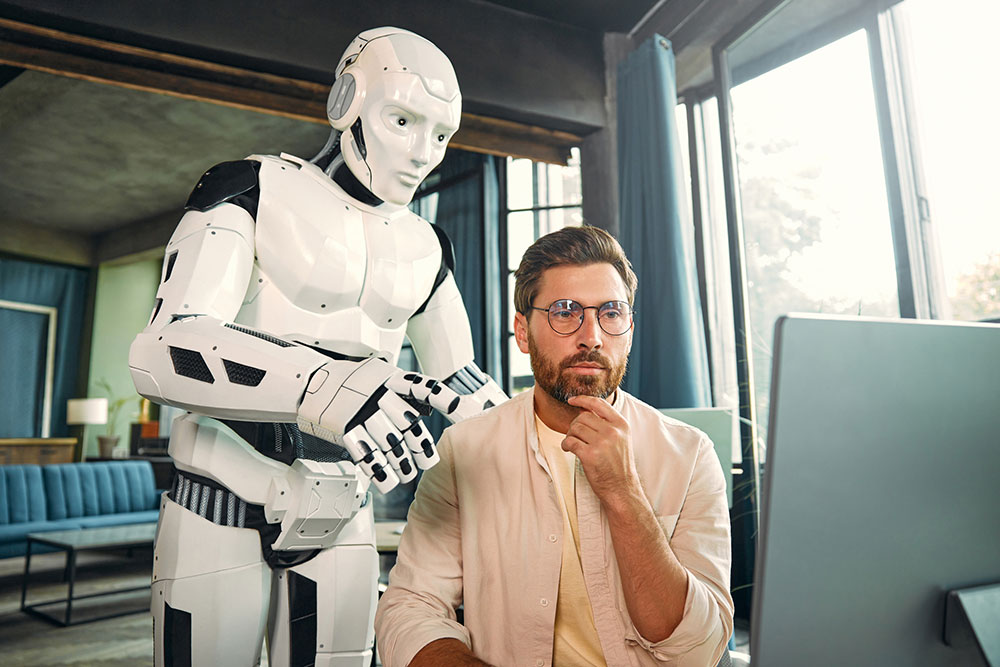
In simulated life-or-death decisions, about two-thirds of people in a UC Merced study allowed a robot to change their minds — despite knowing that the AI’s advice that could be wrong.
The study, funded in part by the U.S. Air Force Office of Scientific Research, gave subjects control of a simulated drone that could fire at a target on screen. Photos of targets flashed briefly, labeling each as ally or enemy. The screen then displayed one of the targets without a label. The subject had to remember: Friend or foe? Fire a missile or withdraw? After the person chose, a robot offered its opinion. The subject had two chances to confirm or change their choice as the robot added commentary that reinforced its initial assessment. (The robot’s assessment was purely random.)
The robot managed to change the subject’s mind about two-thirds of the time. And if the robot agreed with the initial choice, the subject almost always stuck with it and felt more confident their choice was right — even when it wasn’t. As UC Merced professor of cognitive and information sciences Colin Holbrook put it, “We should have a healthy skepticism about AI, especially in life-or-death decisions.”
More from UC Merced: People facing life-or-death choice put too much trust in AI
UC Riverside immunologists formulated the long-sought “universal vaccine”
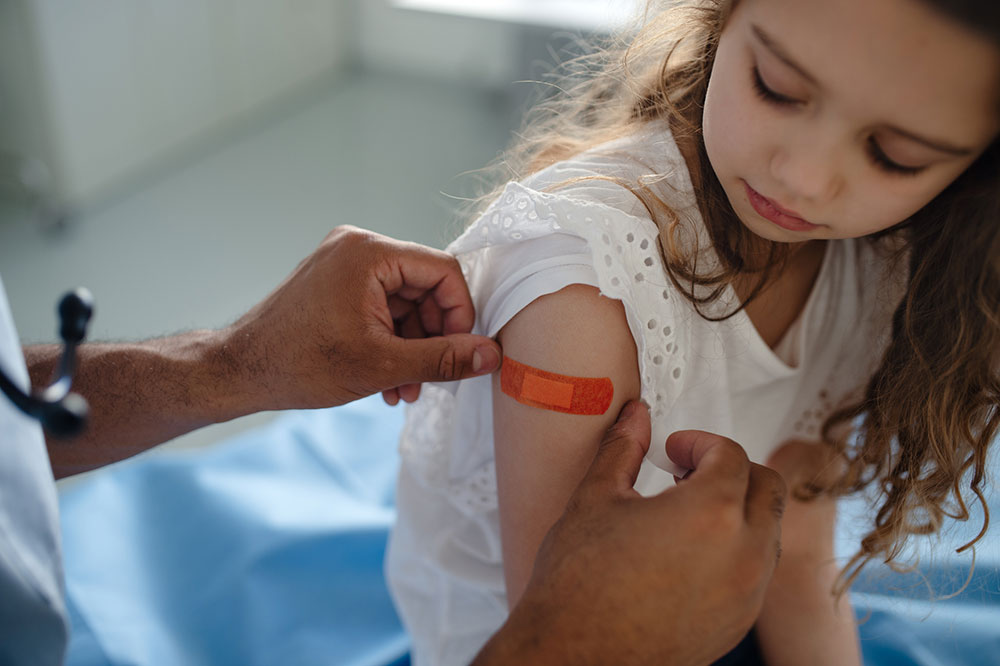
Its ability to mutate quickly is part of what makes the SARS-CoV-2 virus so devastating. No sooner do immunologists develop a vaccine targeting a dominant strain or variant of the virus than a new variant flares and starts to spread, equipped with traits that help it evade the new vaccine.
This year, with funding from the National Institutes of Health, scientists at UC Riverside devised a new approach to vaccines that works against all strains of a given virus. Traditional vaccines train our bodies to produce cells that recognize, attack and remember a specific protein on a specific strain of a specific virus. Apart from these attacking and memory cells, our immune system also produces small molecules called interfering RNA, or RNAi, which help weaken an invading virus. For their part, viruses make proteins that block our RNAi. When we can’t make enough RNAi, the virus wins and we get sick.
The new vaccine disables the part of the virus that makes those RNAi-blocking proteins. That section of the viral genome is the same in all strains of a virus, so the shot should never need to be reformulated. And while babies and immunocompromised people can’t make enough of the memory and attack cells that a traditional vaccine relies on, they don’t have trouble producing enough RNAi, making this vaccine safe and effective for all.
More from UC Riverside: Vaccine breakthrough means no more chasing strains
UC San Diego engineers debuted a robot to help people stay sharp as they age
About 1 in 5 seniors experience mild cognitive impairment, affecting memory, attention, and executive functioning. No drugs exist to slow the progression of this condition, which develops into dementia in about 15 percent of patients each year. But patients can pick up new strategies that make daily life easier. This year, engineers at UC San Diego introduced a robot that can help patients learn and practice these important skills.
They named their creation CARMEN, short for Cognitively Assistive Robot for Motivation and Neurorehabilitation. It sits on a tabletop and walks users through interactive games and activities that double as cognitive training exercises. Developed with support from the National Science Foundation, CARMEN helps patients build a habit of putting their keys back in the same place, or take notes to remember important dates.
In a study, patients welcomed CARMEN into their homes for a week. Afterward they reported that the robot helped them try things they’d previously written off as impossible. “We found that CARMEN gave participants confidence to use cognitive strategies in their everyday life, and participants saw opportunities for CARMEN to exhibit greater levels of autonomy or be used for other applications,” the researchers write.
More from UC San Diego: Meet CARMEN, a robot that helps people with mild cognitive impairment
UC San Francisco neurologists developed a brain implant that anticipates and prevents Parkinson’s symptoms
Nine years after his diagnosis with Parkinson’s disease, former pro skater Shawn Connolly got back on his board, thanks to a new device embedded in his brain by neurologists at UC San Francisco.
Implants to treat Parkinson’s have been around for decades. They send electrical pulses to parts of the brain responsible for movement, disrupting signals that cause the stiffness, slowness and spasms that typify this progressive neurological disease. But symptoms, and the abnormal brainwaves that cause them, change constantly, and most implants can’t keep up.
Connolly’s device improves on the old technology: it picks up on brain signals that indicate a symptom is imminent and, through a personalized algorithm, automatically delivers just the right amount of electrical stimulation to prevent symptom onset. Research into the new technology and its effectiveness is funded in part by the National Institute of Neurological Disorders and Stroke and the Defense Advanced Research Projects Agency. Doctors published the results of Connolly’s clinical trial cohort this year, finding that the new adaptive device reduced patients’ most bothersome symptoms by half and significantly improved their quality of life.
More from UC San Francisco: New Parkinson’s treatment helps former pro keep skating
UC Santa Barbara neurologists discovered how pregnancy changes people’s brains

This might not come as a surprise to those who’ve lived through it: people’s brains change a lot while they’re pregnant. Researchers at UC Santa Barbara scanned one first-time mother’s brain every few weeks, from before pregnancy until two years postpartum. These scans showed two big changes: as her pregnancy progressed, she lost cortical gray matter, the wrinkly layer on top of the brain, and gained white matter, found deeper in the brain. The gray matter decrease persisted after giving birth, while the increase in white matter peaked in the second trimester and was back to pre-pregnancy levels around the end of pregnancy. Researchers speculate the scans showed the brain fine-tuning itself, right before it needs to learn how to take care of a baby.
Previous studies had only scanned women’s brains before and after pregnancy, so they missed the white matter changes and underestimated the neuroplasticity of the adult brain. Considering pregnancy is something that 85 percent of women experience, the neuroscience behind the process is hardly a niche topic, says Laura Pritschet, who was a Ph.D. student at UC Santa Barbara while leading the study, which was funded in part by the National Institutes of Health. These findings, Pritschet said, will “deepen our overall understanding of the human brain, including its aging process.”
More from UC Santa Barbara: New study reveals changes in the brain throughout pregnancy
UC Santa Cruz computer scientists built a more climate-friendly AI
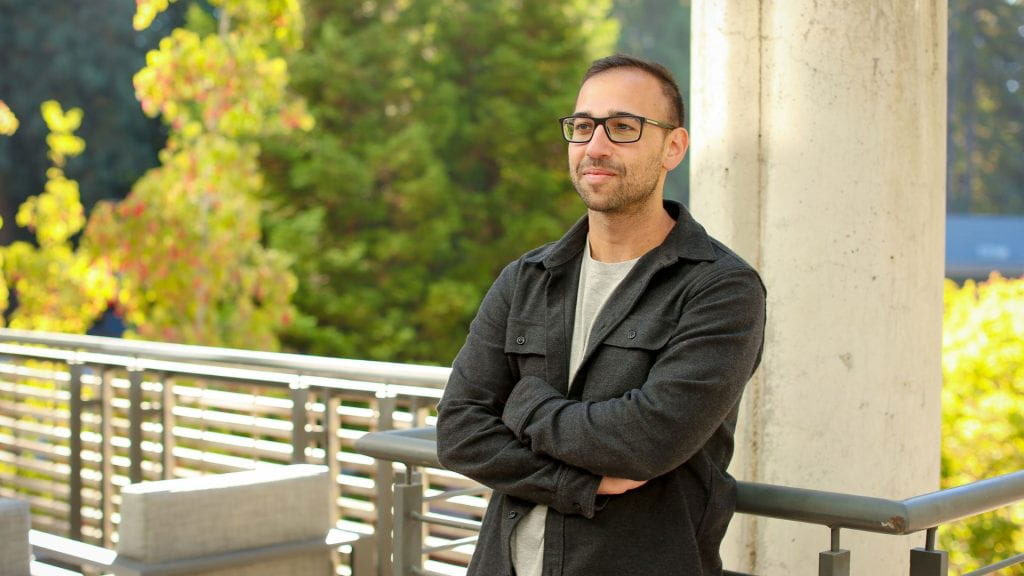
Google recently reported that its annual greenhouse gas emissions have increased 48 percent since 2019, a jump the company attributes mainly to energy-hungry artificial intelligence. This year, with funding from the National Science Foundation, a team of computer scientists at UC Santa Cruz invented a new approach to AI that works as well as state-of-the-art models from big tech companies, using a fraction of the energy.
The key was eliminating a computational process called matrix multiplication. When an AI like ChatGPT parses a sentence, it goes back to the beginning after each word. So while you might read, “I sipped my coffee,” ChatGPT reads, “I. I sipped. I sipped my. I sipped my coffee.” This is matrix multiplication, and it’s the most energy-intensive part of running many of today’s large language model AIs.
The UC Santa Cruz team, led by Assistant Professor of Electrical and Computer Engineering Jason Eshraghian, wrote an algorithm that swaps matrix multiplication for an operation that parses a sentence more like humans read. Then they built a custom machine optimized for the algorithm. The new system can run a massive, billion-parameter-scale language model on just 13 watts, about the amount of energy needed to run a lightbulb, making it 50 times more efficient than standard AI systems.
More from UC Santa Cruz: Researchers run high-performing large language model on the energy needed to power a lightbulb
Berkeley Lab astronomers made a super-precise 3-D map of the universe
The hottest mystery in physics is dark energy, the inexplicable phenomenon that’s thought to be powering the universe’s accelerating expansion. Astronomers at Lawrence Berkeley National Laboratory are leading a massive international study using a device called the Dark Energy Spectroscopic Instrument, or DESI. The team published its first analyses this year, including the biggest and most precise 3-D map of the universe that’s ever been created.
DESI, which is funded in part by the U.S. Department of Energy, collects information from millions of galaxies and enables astronomers to essentially look 11 billion years back in time with unprecedented clarity. The study’s first results provide not only a 3D view of the universe today, but also snapshots of how fast the universe was expanding at any point in the past 11 billion years. That’s helping scientists understand the role of dark energy through time — and they’ve already found some surprises. “So far, we’re seeing basic agreement with our best model of the universe, but we’re also seeing some potentially interesting differences that could indicate that dark energy is evolving with time,” said Michael Levi, DESI director at Berkeley Lab.
More from Berkeley Lab: First results from DESI make the most precise measurement of our expanding universe
Livermore Lab biologists discovered a longer-lasting treatment for fentanyl overdose
The most common treatment for fentanyl overdose is naloxone, which works by bumping the opioid molecules out of their receptors in the brain and then binding to these receptors so more opioid molecules can’t get in. Naloxone is easy to give and safe and has saved tens of thousands of lives, but it’s not perfect: it can wear out before the body has cleared the opioids. So patients can slip back into overdose, and even die, if they don’t get a second dose.
Scientists at Lawrence Livermore National Laboratory went looking for a treatment that hangs around longer in the body. They found it in a compound called subetadex, which has been around since 2002 but had never been tested as an opioid overdose treatment. Where naloxone binds to your body’s opioid receptors, subetadex binds to the opioids themselves, engulfing them so they can’t fit into receptors. Naloxone’s half-life is 30-80 minutes, while subetadex’s is 7.5 hours. That’s long enough that it could be used to prevent overdose from accidental exposure to fentanyl, a concern for first responders.
More from Livermore Lab: LLNL researchers discover promising treatment to counteract the effects of fentanyl for overdose cases
